Search Images
Browse Content (p. 1082)
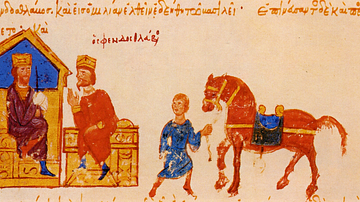
Image
John Tzimiskes Meets Sviatoslav I
Meeting between Emperor John Tzimiskes (r. 969-976 CE) and Sviatoslav I of Kiev (r. 945-972 CE) in the Madrid Skylitzes, fol. 172rb.
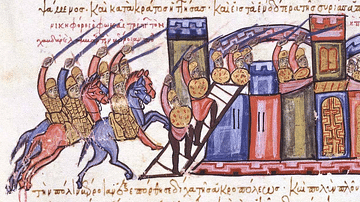
Image
Nikephoros II Phokas Captures Aleppo
Capture of Aleppo by the Byzantines under Nikephoros Phokas in 962 CE.
History of John Skylitzes - Skyllitzes Matritensis (Biblioteca Nacional de España)
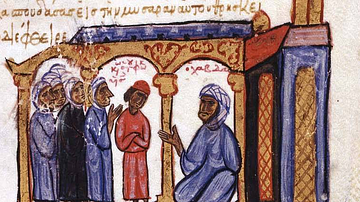
Image
Sayf al-Dawla
Sayf al-Dawla (r. 945-967 CE)at his court
History of John Skylitzes - Skyllitzes Matritensis (Biblioteca Nacional de España)

Image
Nikephoros II Phokas
Medieval illumination representing Nikephoros II Phokas, Byzantine emperor (963-969 CE).

Image
Robert of Normandy at the Siege of Antioch
A 19th century CE painting by Jean-Joseph Dassy of Robert of Normandy at the Siege of Antioch, 1097-8 CE during the First Crusade (1095-1102 CE).
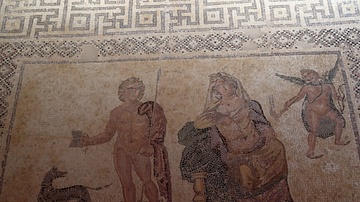
Image
Phaedra & Hippolytus Mosaic
Phaedra and Hippolytus, late 2nd-3rd century CE
House of Dionysus, Paphos Archaeological Park, Cyprus
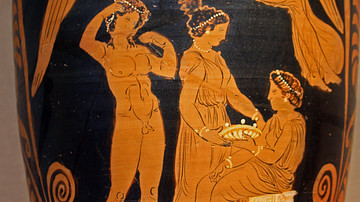
Image
Hippolytus & Phaedra
Terracotta neck-amphora (jar) Red-figure, Greek, South Italian, Campanian, Late Classical Date: c. 330–310 BCE, attributed to the Ixion Painter On the body, obverse: Hippolytus, attendant, and Phaedra, with a Fury above Reverse: two...

Image
Raymond IV of Toulouse
A 19th century CE illustration of Raymond IV of Toulouse (c. 1041-1105 CE), one of the principal leaders of the First Crusade (1095-1202 CE). (Palace of Versailles, Paris)

Image
Taking of Jerusalem by the Crusaders
A 19th century CE painting by Émil Signol titled "Taking of Jerusalem by the Crusaders, 15th July 1099". Jerusalem was recaptured from the Muslims during the First Crusade, 1095-1202 CE. (Palace of Versailles, France)

Image
Pope Urban II
A statue of Pope Urban II (r. 1088-1099 CE) who called for the First Crusade (1095-1202 CE). Clermont-Ferrand, France.